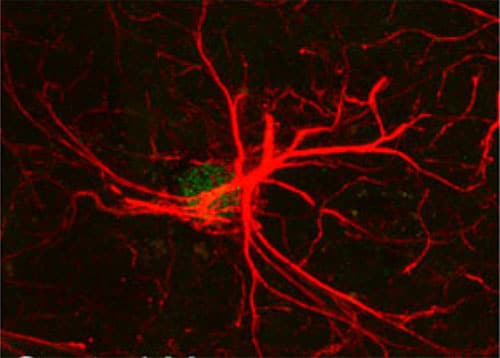
A University of Newcastle research team is riding a new wave of exploration into how the brain responds to stroke and chronic psychological stress after discovering significant new traits for neural connectors known as glial cells.

A University of Newcastle research team is riding a new wave of exploration into how the brain responds to stroke and chronic psychological stress after discovering significant new traits for neural connectors known as glial cells.
Previous research has largely studied the response of neurons alone, overlooking the role of billions of glial cells which are likened to electrical junction boxes.
“For such a long time we thought the information flow in the central nervous system was mediated by neurons but we have now discovered that the junction is the critical component where messages are passed,” researcher Dr Rohan Walker* said.
“It was thought that glial cells were killed by exposure to chronic stress, however we have proved that they don’t die. Rather, they undergo a remarkable form of remodelling, radically changing their structure and pattern of connectivity to deal with the challenge.”
The findings, published in the world-leading neuroscience journal Acta Neuropathologica, could potentially change current thinking about treatments for cognitive and mood disturbances, and the way neuroscientists look at reprogramming of the brain.
“Neurons comprise less than half of our brain’s cellular volume but 99 per cent of research has focused on them. We’ve largely ignored a large part of the brain,” Dr Walker added. “In a sense this glial biology field is where neuroscience was many decades ago … The levels of discovery are fundamental.”
HMRI Director Michael Nilsson, who leads the research team, said that Dr Walker’s expertise had complemented his own long-standing work in stroke rehabilitation, particularly the impact of glial cells known as astrocytes.
“It’s very satisfying to be able to pool our talents and make these significant findings,” Professor Nilsson said.
“When you have a brain injury, as in the case of stroke, there’s evidence there can be a shift of function from affected to non-affected areas.
“We’ve been calling it ‘neuronal plasticity’ but we’re now looking at ‘glial plasticity’. With glial cells being critical to the way the brain responds to stress and stroke, we have to find the principle mechanisms involved with this cell population being attacked.”
Having made the discovery, the team is evaluating new preventative and treatment methods. One area being explored is the rehabilitative technique of “enhanced environment”, involving feel-good factors such as music and art.
“Environmental challenges induce the glial plasticity so the natural offset is to look at environmental interventions which can address that,” Dr Walker said. “We’ll also look at developing new drug therapies because, as far as I’m aware, there are no treatment options for targeting and modifying glial cells.”
* Dr Rohan Walker is a Research Fellow with the University of Newcastle’s School of Biomedical Sciences and Pharmacy and a member of HMRI’s Brain and Mental Health Program. HMRI is a partnership between the University of Newcastle, Hunter New England Health and the community.
HMRI would like to acknowledge the Traditional Custodians of the land on which we work and live, the Awabakal and Worimi peoples, and pay our respects to Elders past and present. We recognise and respect their cultural heritage and beliefs and their continued connection to their land.
Hunter Medical Research Institute
We’re taking healthy further.
Locked Bag 1000
New Lambton
NSW, Australia, 2305


This site is protected by reCAPTCHA and the Google Privacy Policy and Terms of Service apply.
Copyright © 2024 Hunter Medical Research Institute | ABN: 27 081 436 919
Site by Marlin Communications
